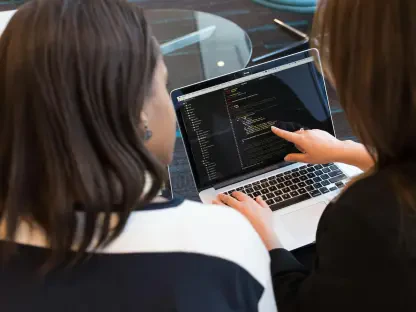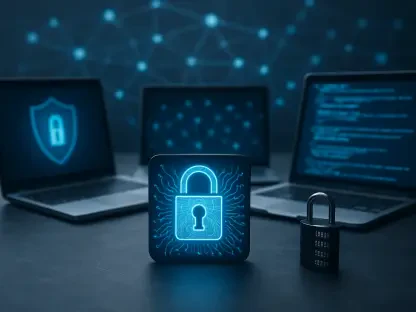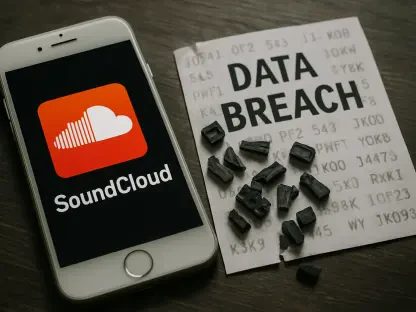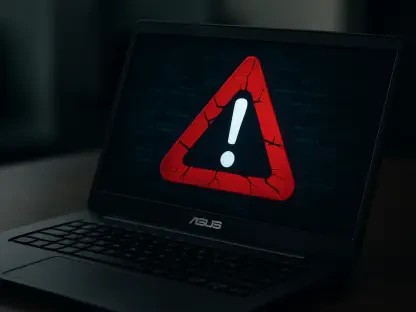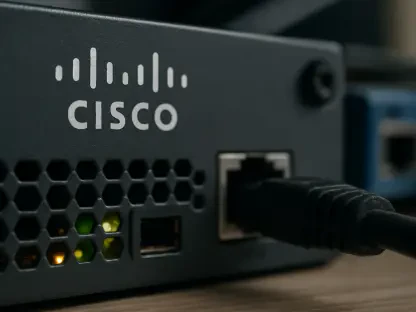In a digital landscape where data breaches and privacy concerns dominate headlines, securing sensitive communications has never been more critical for businesses, and imagine a scenario where a single intercepted email containing proprietary information could jeopardize an entire organization’s future. Fortunately, a significant step forward has been taken to address such risks. Google has officially rolled out end-to-end encryption (E2EE) for email messaging, a feature that was initially tested earlier this year for enterprise users. This advancement, exclusive to Google Workspace accounts, ensures that business emails remain protected even when sent outside the Gmail ecosystem. With E2EE, only the sender, the recipient, and the managing IT department can access the content, safeguarding critical data like company secrets or HIPAA-regulated medical information from unauthorized eyes. This development marks a pivotal moment for enterprise security, offering a robust solution to a persistent challenge in digital communication.
1. Understanding the Impact of E2EE for Enterprise Users
End-to-end encryption represents a game-changer for businesses relying on email for sensitive exchanges. This technology scrambles the content of an email into an unreadable format, which can only be decoded using specific keys held by the involved parties. Importantly, these keys are not stored on Google’s servers, meaning that even the tech giant itself cannot access the encrypted messages. For enterprises, this level of security is invaluable when transmitting confidential information, such as financial reports or client data. The rollout of E2EE to Google Workspace users addresses a critical need for privacy in an era where cyber threats are increasingly sophisticated. Businesses can now communicate with greater confidence, knowing that their emails are shielded from potential interception by external parties.
The implications of this feature extend beyond mere technical protection to influence trust and compliance. For industries bound by strict regulations, such as healthcare or finance, E2EE facilitates adherence to legal standards like HIPAA by ensuring that sensitive data remains confidential during transit. While this capability is currently limited to business accounts, it sets a precedent for how email security can evolve. Enterprise users gain a competitive edge by adopting a tool that not only protects their operations but also reassures clients and partners of their commitment to data privacy. This move by Google highlights a growing recognition of the importance of robust security measures in maintaining business integrity in a digital world.
2. Limitations and Challenges of E2EE Availability
Despite the promising benefits of end-to-end encryption, its availability is currently restricted to enterprise users with Google Workspace accounts. This exclusivity means that millions of personal Gmail users are left without access to this high level of email security. For small businesses or freelancers using standard accounts, the absence of E2EE poses a significant barrier to safeguarding their communications. While alternative methods exist to add some layers of protection, they fall short of the comprehensive security that E2EE provides. This limitation underscores a gap in accessibility that could hinder broader adoption of secure email practices across diverse user groups.
The restriction to business accounts also raises questions about future expansions of this feature. Personal users, who may also handle sensitive information, are compelled to seek other platforms or services for similar protection. This disparity can create a fragmented approach to email security, where only larger organizations with the resources to afford Workspace plans benefit from cutting-edge encryption. Addressing this challenge will be crucial for ensuring equitable access to privacy tools. Until E2EE becomes more widely available, non-enterprise users must remain cautious and explore supplementary measures to protect their digital correspondence from potential threats.
3. Step-by-Step Guide to Sending E2EE Emails in Enterprise Gmail
For Google Workspace users eager to leverage end-to-end encryption, the process to send secure emails is straightforward but requires specific steps. First, ensure that the Workspace administrator has enabled E2EE for the account. Once activated, open Gmail and click “Compose” to start drafting a new message. Next, select “Message security,” and under “Additional encryption,” click “Turn on” to activate E2EE. From there, write the email as usual, add recipients, and send the message. If the recipient is also a Google Workspace user, the email decrypts automatically in their inbox. For non-Gmail recipients, a link directs them to a restricted Gmail window where they can sign in to view and reply to the decrypted content. Note that IT departments may configure all E2EE emails to open in restricted windows, regardless of the recipient’s account type.
Understanding the nuances of this process is essential for effective implementation. The requirement for admin activation ensures that organizations maintain control over security settings, aligning with their internal policies. However, this also means that individual users must coordinate with IT teams to enable the feature, which could introduce delays. The restricted window for non-Workspace recipients adds an extra layer of security but may affect user experience due to the additional sign-in step. Businesses should communicate these steps clearly to employees to avoid confusion and ensure seamless adoption. Mastery of this process empowers enterprise users to protect sensitive communications consistently, reinforcing their digital defenses against unauthorized access.
4. Securing Emails with Confidential Mode for Standard Accounts
For those without access to a Google Workspace account, Gmail offers a less robust but still useful option known as Confidential Mode. To use this feature, open Gmail and click “Compose” to start a new message. Then, select “Confidential Mode” from the options at the bottom of the email window. Configure settings to prevent forwarding, copying, printing, or downloading the email. Additionally, set an expiration date for the message—options include 1 day, 1 week, 1 month, 3 months, or 5 years—and opt for password protection if desired. If enabled, Gmail generates a password and sends it to the recipient via SMS. This mode provides a basic level of security for standard users who need to share sensitive information without the full benefits of E2EE.
However, it’s critical to recognize the limitations of Confidential Mode as a security tool. Unlike end-to-end encryption, this feature does not prevent interception of messages, meaning that determined parties could still access the content. Furthermore, there’s nothing to stop recipients from capturing the email through external means, such as taking a photo of the screen. Standard account holders must exercise caution and avoid using this method for highly critical data. Educating users about these constraints is vital to prevent over-reliance on a tool that offers only partial protection. For now, Confidential Mode serves as a temporary measure while more comprehensive solutions remain out of reach for personal Gmail accounts.
5. Alternative Security Options for Personal Gmail Users
Personal Gmail users facing the absence of end-to-end encryption must consider alternative platforms for secure communication. Services like Signal, WhatsApp, and iMessage offer E2EE by default, ensuring that messages remain private between sender and recipient. These platforms are particularly useful for individuals who frequently handle sensitive information and cannot rely on Gmail’s standard features. Switching to such tools can provide peace of mind, especially when dealing with personal data or confidential discussions that require the highest level of protection. Exploring these options allows users to bypass the limitations of their current email setup.
Adopting alternative services also encourages a broader awareness of digital security practices among personal users. While transitioning to new platforms may involve a learning curve, the benefits of enhanced privacy often outweigh the initial inconvenience. It’s advisable to evaluate the specific needs of each communication scenario to select the most appropriate tool. For instance, instant messaging apps with E2EE are ideal for quick exchanges, whereas dedicated encrypted email services might suit longer, formal correspondences. By diversifying their approach to security, personal Gmail users can mitigate risks and maintain control over their private information in an increasingly connected world.
6. Future Steps for Enhanced Email Security
Reflecting on the rollout of end-to-end encryption for enterprise Gmail users, it became evident that a significant milestone was achieved in bolstering business communication privacy. The feature provided a robust shield for sensitive data, setting a high standard for secure email exchanges within corporate environments. However, the journey toward universal email security saw gaps, as personal account holders were left without similar protections. This disparity highlighted the need for broader access to such critical tools in the digital communication landscape.
Looking ahead, the focus should shift toward expanding E2EE to all Gmail users, ensuring that individuals and small businesses also benefit from top-tier security. Exploring dedicated E2EE platforms remains a practical next step for those outside the enterprise sphere, offering immediate solutions to privacy concerns. Additionally, raising awareness about the limitations of interim measures like Confidential Mode is crucial to prevent misuse. By advocating for inclusive security features and supporting alternative tools, the path is paved for a future where every email user can communicate with confidence and safety.




